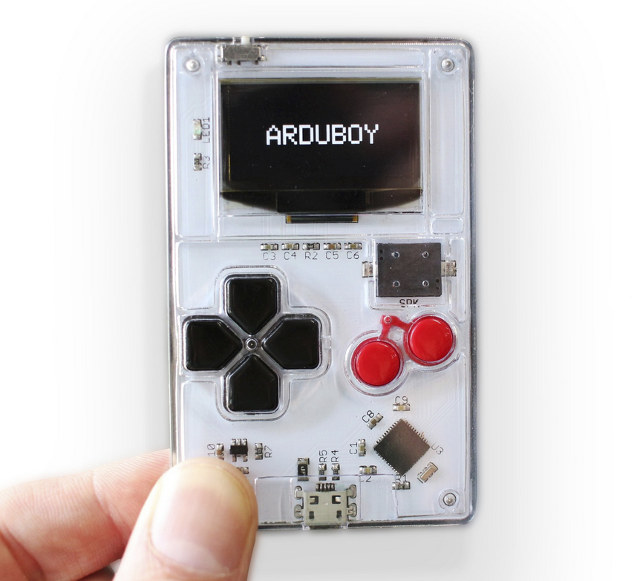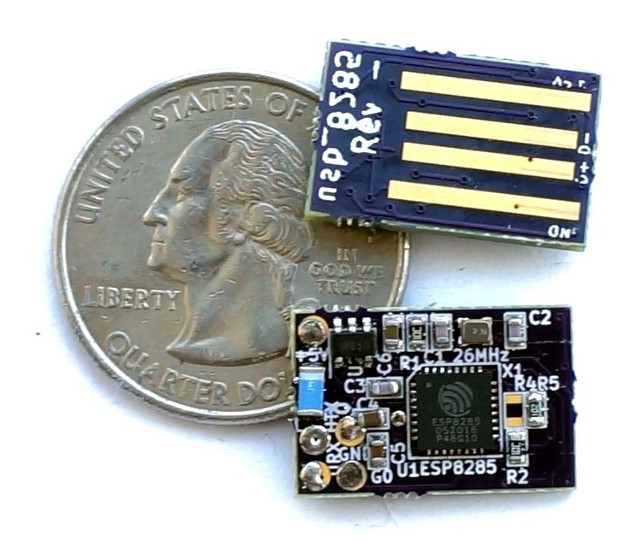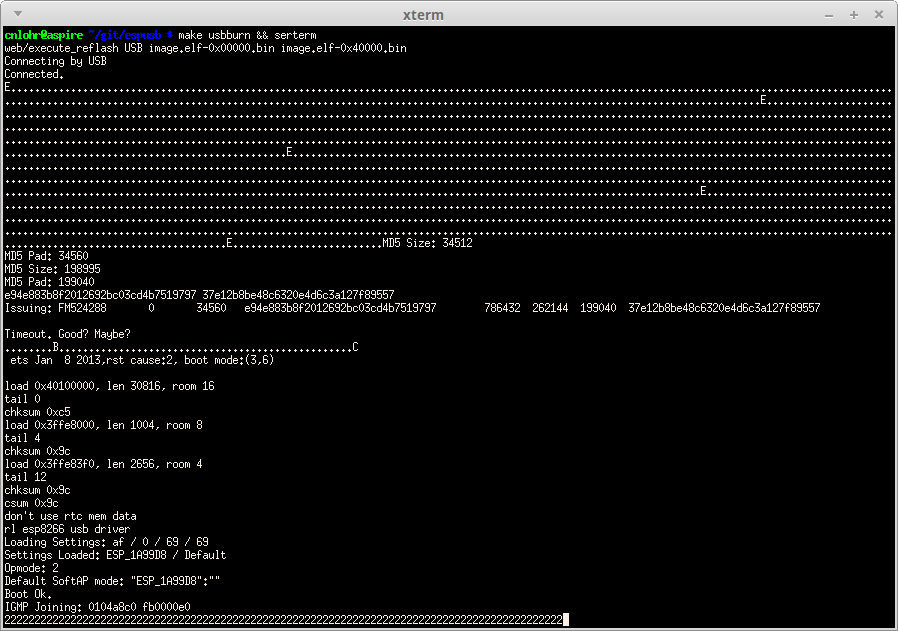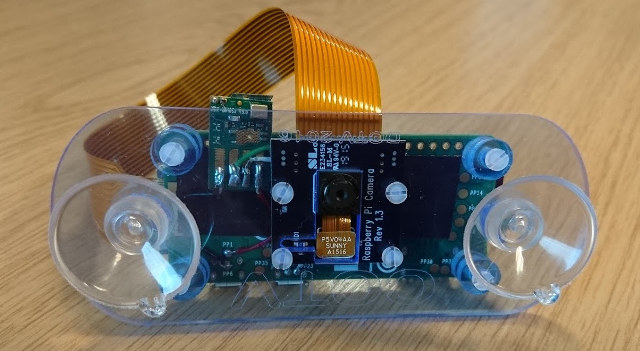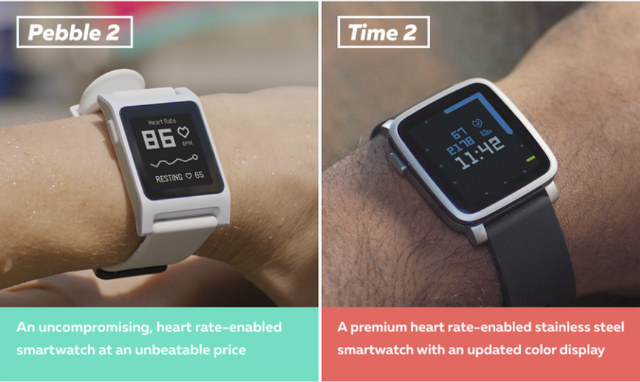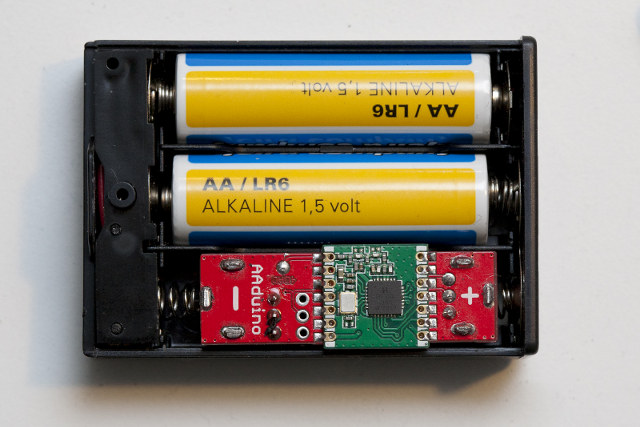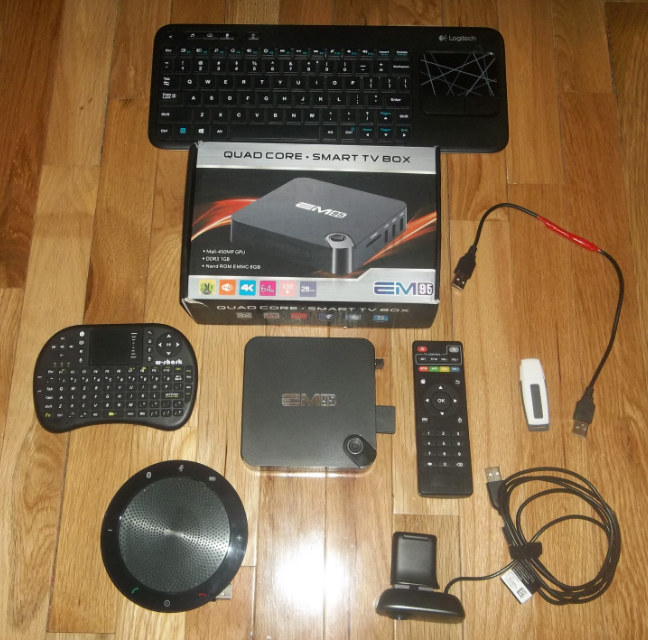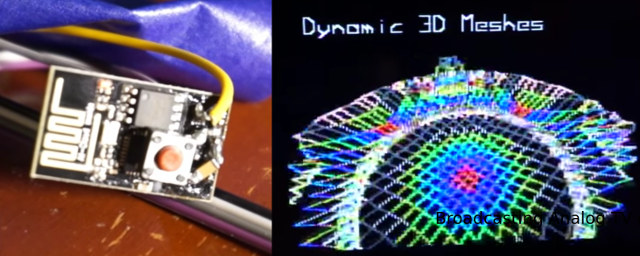Ardubox feels like the little brother of PocketCHIP portable & hackable game console with its transparent case, but instead of running Linux on a 32-bit ARM processor, Ardubox is based on the same Atmel ATmega32u4 MCU used in Arduino Leonardo & Micro boards. Arduboy specifications: MCU – Atmel ATmega32u4 AVR MCU with 32KB flash, 2.5KB RAM, and 1KB EEPROM Display – 128×64 1-bit OLED display USB – 1x micro USB 2.0 port for power and programming User Inputs – 6x momentary tactile buttons Audio – 2 channel Piezo Speaker Misc – 1x LED Battery – 180 mAh Thin-Film Li-Po battery good for over 8 hours Beside the Arduino IDE, The board can also be programmed with Codebender, GCC & AVRDude. There’s also a fairly long list of games to play with, and it can be hacked as a virtual business card, a USB mouse and keyboard, a synthesizer, and more. […]
USB Fun – Tiny USB WiFi and Hub Boards and micro USB Hub
I’ve come across a few interesting tiny USB boards and hubs in the last few days, so instead of writing a post for each, I’ve gathered all info into a single article. Small ESP8285 USB Board A couple of weeks ago, CNLohr released his first ESPUSB virtual USB implementation for ESP8266 allowing to use USB with external hardware, barring a resistor, and only two GPIOs. He has now made a tiny board based on ESP8285 with a USB interface leveraging ESPUSB. Hardware files can be found on github. So what can you do with it? CNLohr leveraged the work of the community in order to emulate a keyboard and mouse using a smartphone. The only bit of bad news in the video is that finally USB full speed (12 Mbps) can’t be supported. NanoUSB Hub Board Mux wanted to add more USB devices to its tablets, but there was none […]
ESP8266 Gets USB Support Thanks to ESPUSB Software Stack
Neither ESP8266 nor ESP32 support USB, so what am I babbling about? No, ESP8622 did not suddenly grow a USB PHY, but cnlohr decided to implement virtual USB support using two GPIOs (12 & 13) for the D+/D- USB signals, meaning you can connect any ESP8266 module through USB, or even update the firmware through USB without external hardware, apart from a single extra resistor. The source code is available on espusb repo on github. Please note that the code is currently work in progress, and USB implementation currently only works at 1.5 Mbit/s, with potentially future support for 12 Mbit/s. That’s the demo, and an explanation about the design process. Jean-Luc Aufranc (CNXSoft)Jean-Luc started CNX Software in 2010 as a part-time endeavor, before quitting his job as a software engineering manager, and starting to write daily news, and reviews full time later in 2011. www.cnx-software.com
DIY Wireless Window/Glass Mounted Camera Based on Raspberry Pi Zero Board
A few weeks ago, the Raspberry Pi foundation announced a new version of the Raspberry Pi Zero with a CSI camera connector. Since the solution is quite lightweight, Steven Cassidy had the idea to make a WiFi enabled window camera by soldering a USB WiFi module and fitting the hardware to a plastic part with two suction cups. Once the assembly is done, you can stuck the hardware to a window or glass of your choice in your home, car, aquarium, etc… If you like the concept but would like to have something working out of the box instead of making your own, the Pi Hut has design ZeroView on the same principle, and which will sell for 7 GBP (~$10.3). Jean-Luc Aufranc (CNXSoft)Jean-Luc started CNX Software in 2010 as a part-time endeavor, before quitting his job as a software engineering manager, and starting to write daily news, and reviews […]
Pebble 2 & Time 2 Smartwatches, and Pebble Core for Runners and Hackers Launched on Kickstarter
Pebble launched one of the first smartwatches in 2012, and is now one of the most famous name for wearables. The company has now launched another crowdfunding campaign for three wearables: Pebble 2 & Time 2 watches, and Pebble Core which can be either be used as a fitness tracker for runner, or by hardware hacker to play with IoT apps. Pebble 2 and Time 2 can receive notifications from your Android or iOS smartphone, include a built-in HRM for activity tracking, and a microphone for voice record and SMS, and are waterproof of up to 30 meters. To me the two key features of Pebble wearables are always-on displays, and long battery life, and the two new watches have a black & white (Pebble 2) or color (Time 2) always-on display, and up to one week of battery life for Pebble 2, and 10 days for Time 2. Pebble […]
AAduino Arduino Compatible Board Fits Neatly into an AA Battery Holder
Johan Kanflo has been using Arduino compatible boards based on Tiny328 MCU with an ISM radio module (wireless Arduino clone), but he found that finding a case was not easy, and was quite not ready to to design its own and print it with a 3D printer. So instead he shrank the board to fit into an AA battery case bought on Ebay with two AA batteries taking the remaining slots. That’s the result. AAduino board specifications: MCU – Atmel ATMega328p clocked at 8 MHz to save power Radio – RFM69C ISM transceiver module Sensors – Two DS18B20 temperature sensors Misc – Indicator LED Keystone battery terminals rotated 180° to act as positive and negative terminals. Power – 2x AA batteries The project is also open source hardware, with all hardware files released under the MIT license on Github, where you’ll also find a demo sketch for the board. Via […]
Eny EM95 Amlogic S905 TV Box Review
CNXSoft has already taken some pictures of Eny EM95 Amlogic S905 TV box, so I’ll take over from here as I received my ENY EM95 today and I was excited. I have not got a new Android device in a while. First Impressions I opened it up to find a tiny box that has a display on it. Seems interesting. While booting it says boot and the rest of the time it shows the time in 24 hour format and a few other indicators that I didn’t find particularly useful. In the retail box is the device remote and HDMI cable and power supply. I noticed no micro or mini USB port to flash firmware. I don’t have a type A to type A cable so will need to pick one up. I was working from home today so I was able to open immediately and play with it for […]
You Can Now Connect ESP8266 Module to Your Color Television (Sort of)
You can do lots of things with ESP8266 WiFi modules, but CNLohr did something rather unexpected as he managed to use GPIO3/RX pin to broadcast NTSC signals first in black & white, and now in color, to his television’s channel 3. On the hardware side, he did have to disconnect the WiFi antenna, and connected a wire antenna to GPIO3/RX pin. He then set I2S to run at 80 Mbps, and pushed data out using DMA buffers, so he could achieved the 61.25 MHz frequency required for NTSC luminance data, and the color data, 3.579MHz higher up. Once the demo is running, you can alter it on the fly using a web neat interface. This is all explained on channel3’s github repository, as well as one a 15-minute video showing the capabilities and limitations, and explaining how you can play around with the parameters. Via ESP8266COM’s Tweet. Jean-Luc Aufranc (CNXSoft)Jean-Luc […]


